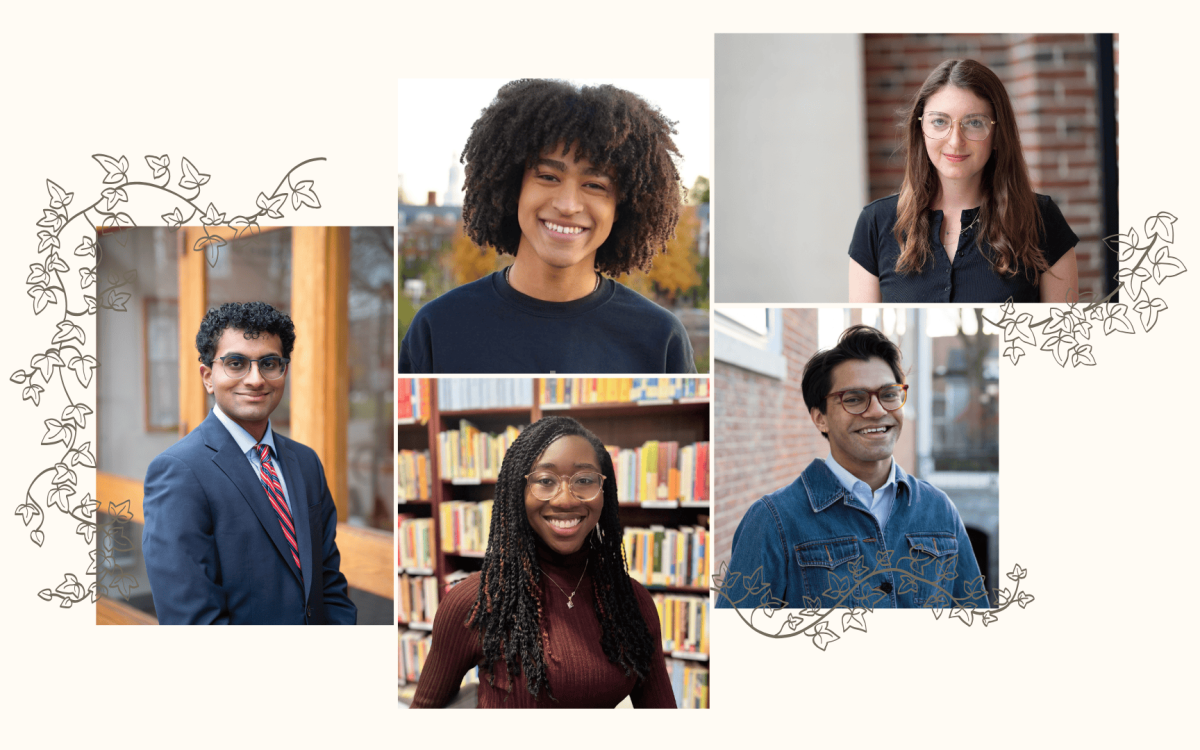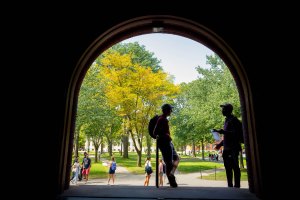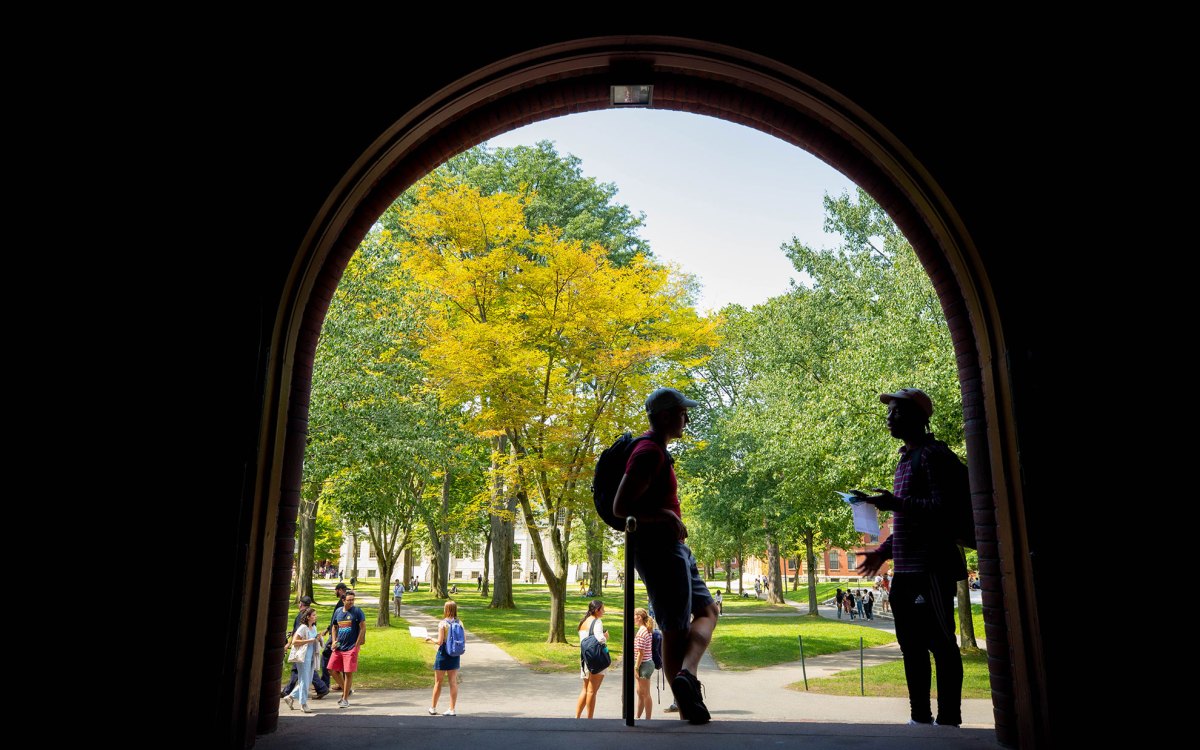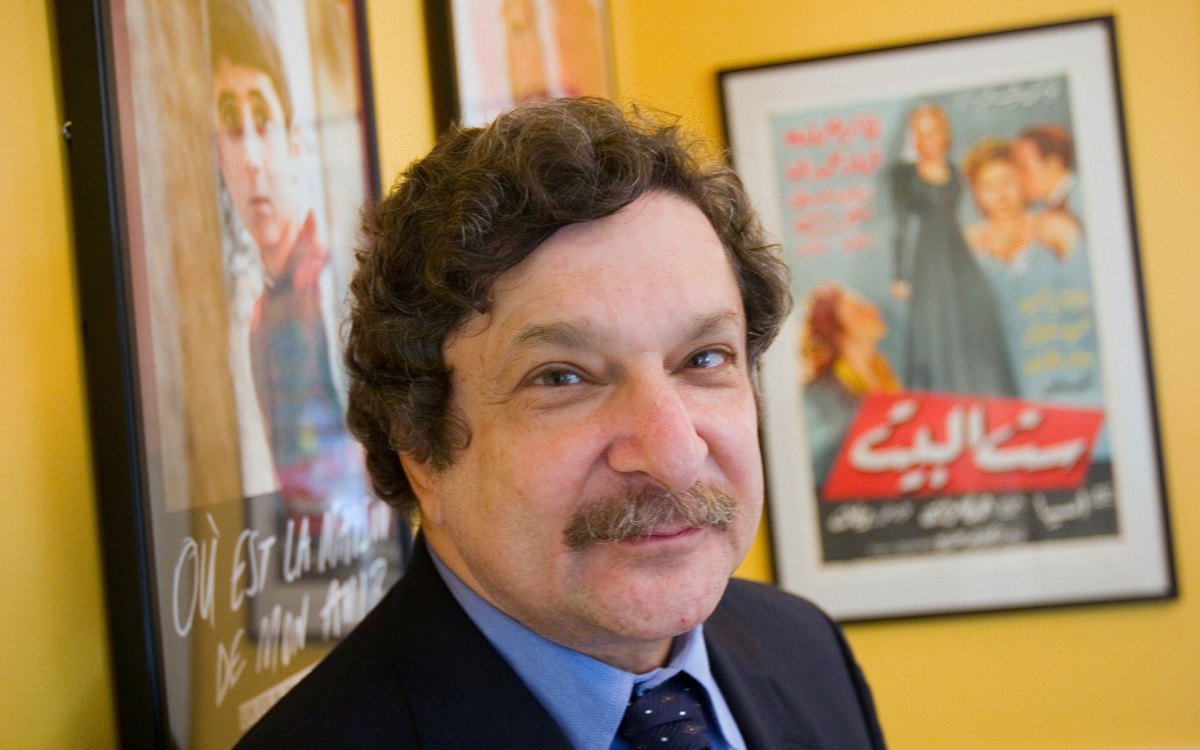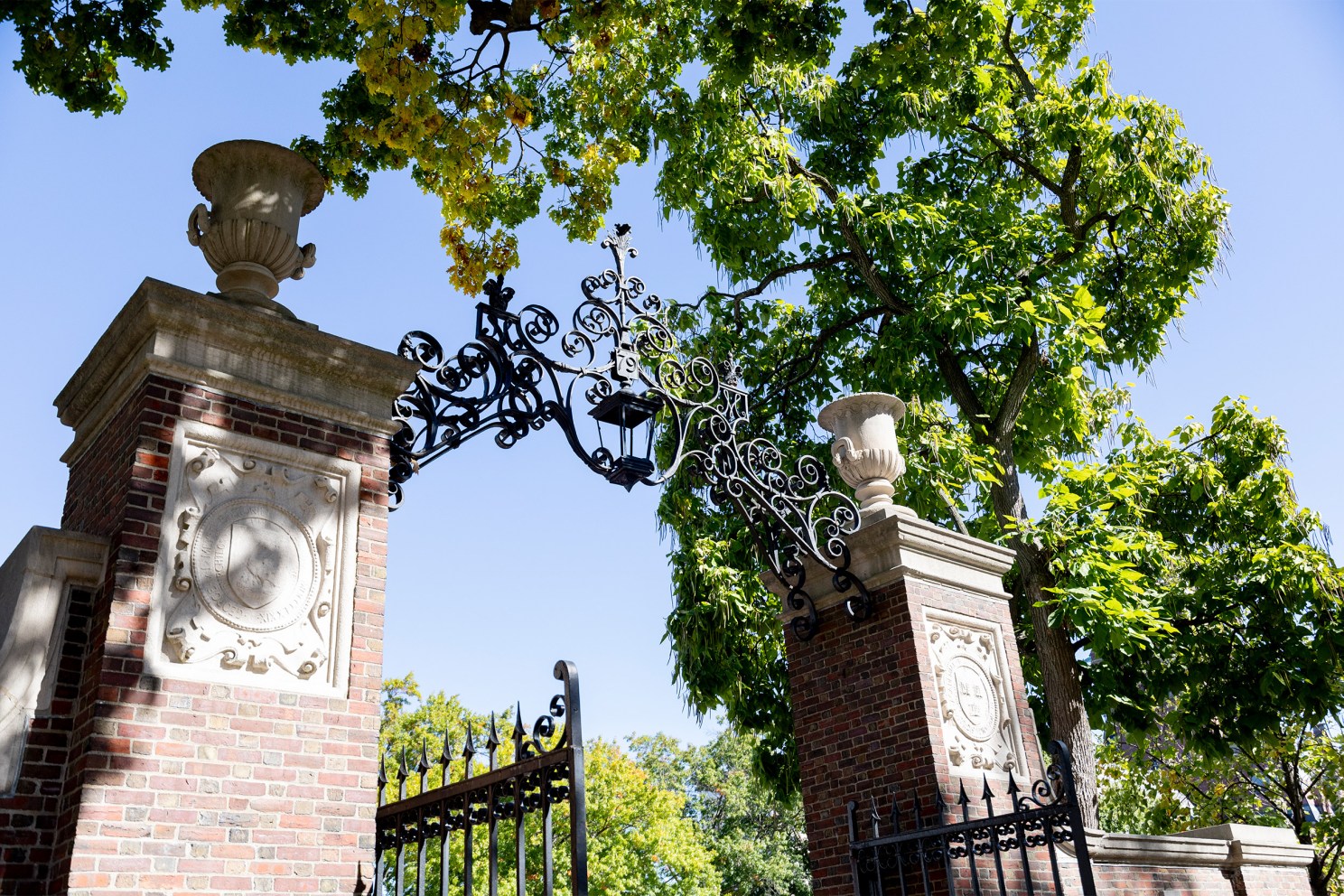
Harvard University.
Photo by Dylan Goodman
At a meeting of the Faculty of Arts and Sciences on Oct. 7, 2025, the following tribute to the life and service of the late Tai Tsun Wu was spread upon the permanent records of the Faculty.
Professor Tai Tsun Wu was a formidable member of both the School of Engineering and Applied Sciences (SEAS) and the Department of Physics at Harvard. At the age of 22, his ground-breaking research on antenna theory under the direction of Professor Ronold W. P. King established him as one of the leading experts in this important field. The remarkable breadth of Wu’s research interests over the course of his career was underpinned by his exceptional mathematical abilities. Although he shifted the main thrust of this research to fundamental problems in physics, he continued for years to be active in solving basic electricity and magnetism problems that arise in antenna theory.
During Wu’s subsequent productive career, he pursued a long collaboration with Hung Cheng, a professor at the Massachusetts Institute of Technology (MIT). Their extraordinary study of the high-energy behavior in quantum field theory illuminated properties of renormalization theory and resulted in the prediction of rising total cross-section of hadron scattering. Wu’s work on statistical mechanics models with Barry McCoy, Craig Tracy, and others led to different insights, including finding a closed-form solution for correlation functions of the scaling limit of the Ising model, ostensibly an exact quantum field theory. In 1975 Wu collaborated with C.N. Yang to reformulate the theory of monopoles, leading to what is now referred to as the “Wu-Yang dictionary.” Professor Wu advised many graduate students and had numerous collaborators, including John Myers.
Wu’s research led to his recognition in many ways. Among other achievements, he received the Dannie Heineman Prize for Mathematical Physics and the Alexander von Humboldt Foundation Prize. He was elected to the American Academy of Arts and Sciences and to the Academia Sinica. Wu taught courses in applied mathematics and in physics in the Department of Physics and in SEAS. He was known to students and colleagues as an accessible expert on mathematical methods. Wu shunned the limelight and the pursuit of recognition; rather, he constantly focused on his research. For this reason, despite the fact that he authored over 400 publications, including six books, his work is not as widely known as it should be.
Wu was born on Dec. 1, 1933, in Shanghai, China. He came to the United States to study as an undergraduate at the University of Minnesota, where, in 1953, he won the William Lowell Putnam Mathematical Competition. This national competition for undergraduates has a Harvard connection: it was established by Elizabeth Lowell Putnam in honor of her husband and it offers a Harvard graduate school scholarship to one of the top winners each year. Wu applied to Harvard as the first Putnam Fellow from the University of Minnesota. A story that is still told is that members of the Department of Mathematics had naturally assumed that young Wu would be joining them, but he had applied to study applied physics. His doctoral thesis led to his election to the Society of Fellows at the age of 22 and to his appointment in the Harvard Faculty of Arts and Sciences at age 25, where he remained until 2021, when he became an emeritus professor.
Wu was fond of several local Chinese restaurants, where many friends were his guests for lunch or dinner. One of these guests recalled being feasted by Wu with a dinner that included chicken feet, an unusual experience. Wu expressed his generosity in many other ways. One new faculty member arrived at Harvard without a car just as Wu was about to leave for a sabbatical. Wu insisted that his young colleague drive his Dodge Dart until he returned.
While at Harvard, Wu became acquainted with Sau Lan Yu, a graduate student in experimental physics. They married on June 18, 1967, in the Harvard Memorial Church. Sau Lan went on to become distinguished for her role in the discovery of the J/𝜓 particle with Samuel Ting at Brookhaven National Laboratory, as well as for leading many experiments with the European Organization for Nuclear Research (CERN). The Wu family spent much time both in Cambridge and Europe. In 2022 they sold their Cambridge house and moved to Palo Alto, California, where Wu died in the Stanford University hospital on July 19, 2024.
Respectfully submitted,
Hung Cheng (MIT)
Sheldon Glashow
John Hutchinson
Arthur Jaffe, Chair
Portions of this Minute were previously published: Arthur Jaffe, “Tai Tsun Wu (1933-2024),” Department of Physics’ website, July 23, 2024, https://www.physics.harvard.edu/news/tai-tsun-wu-1933-2024 [accessed Aug. 11, 2025].
